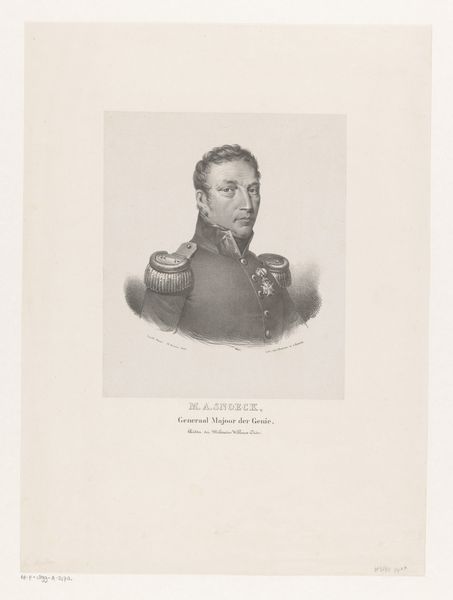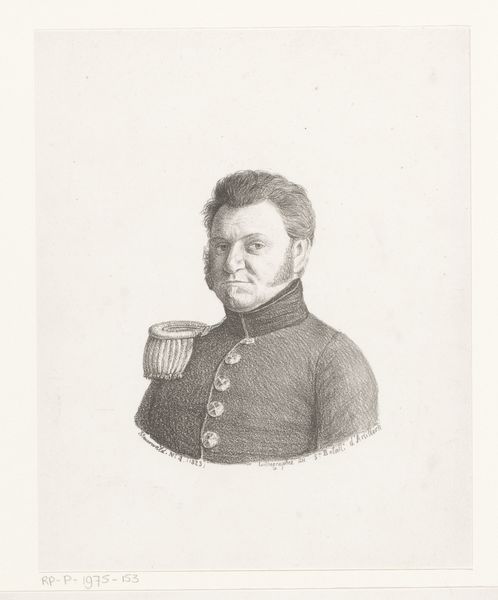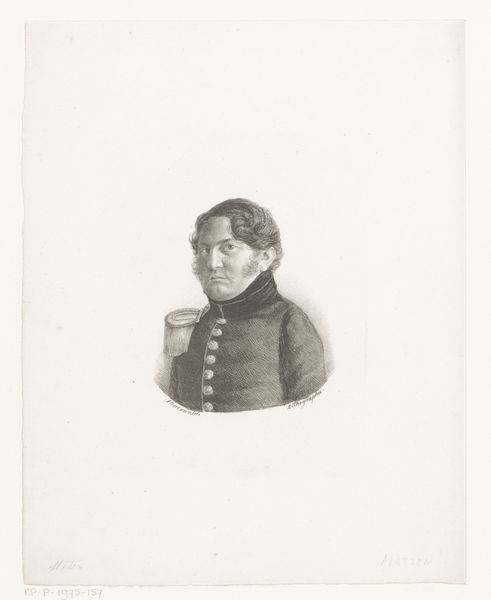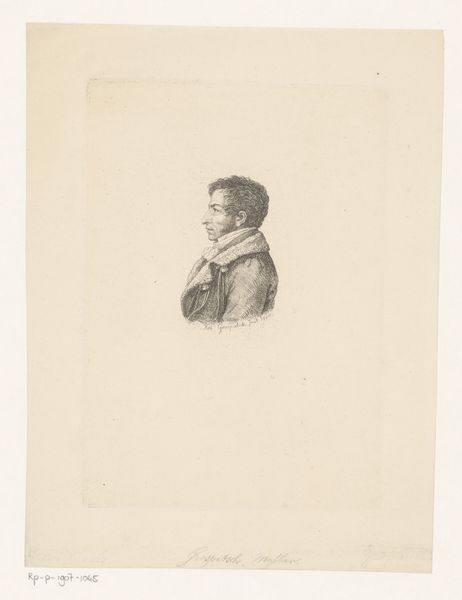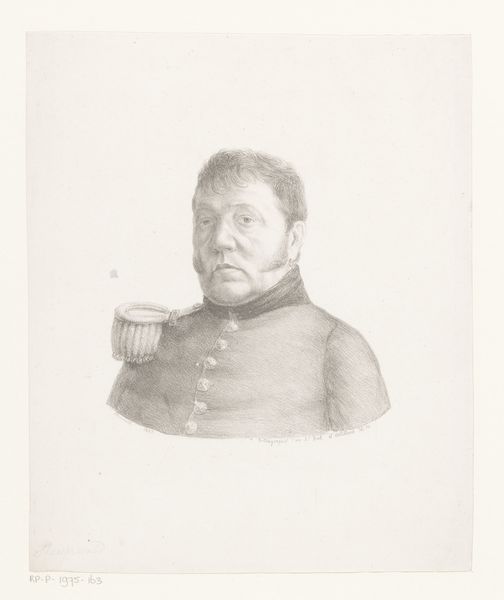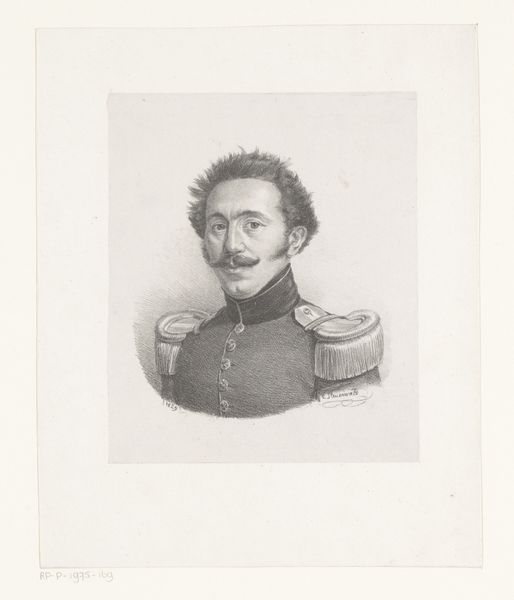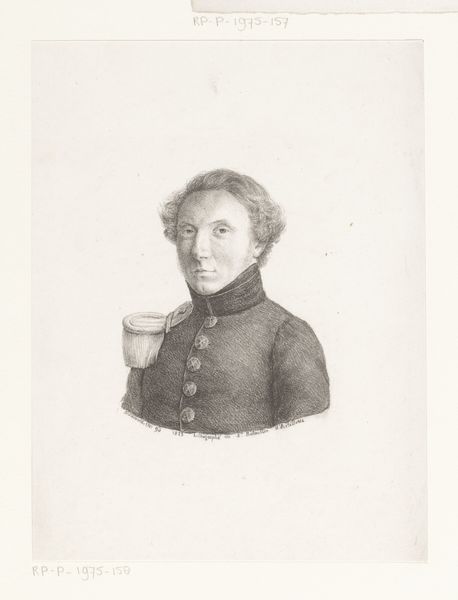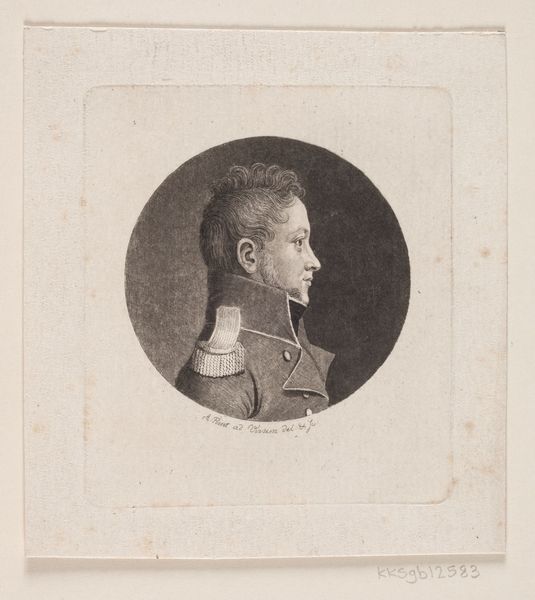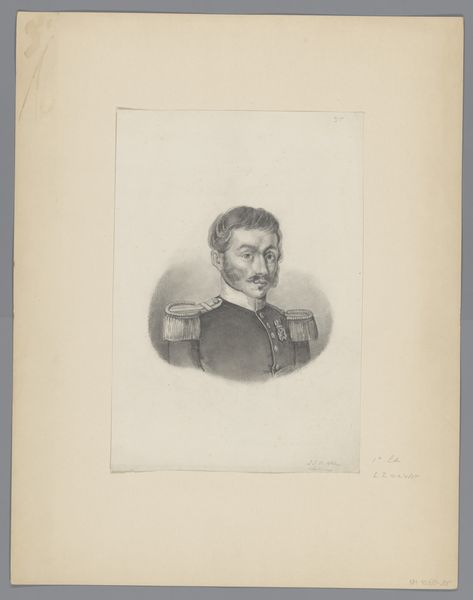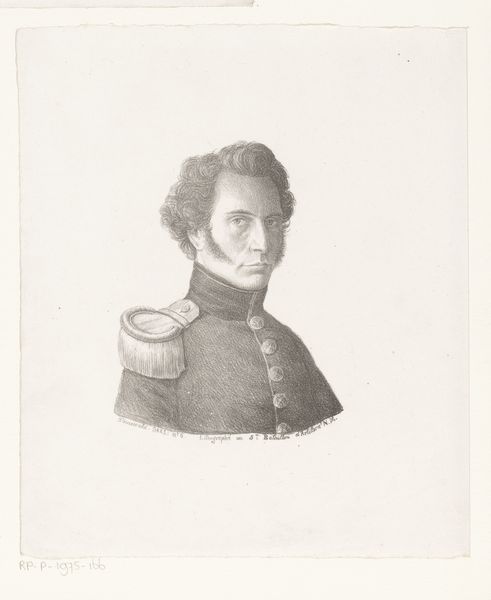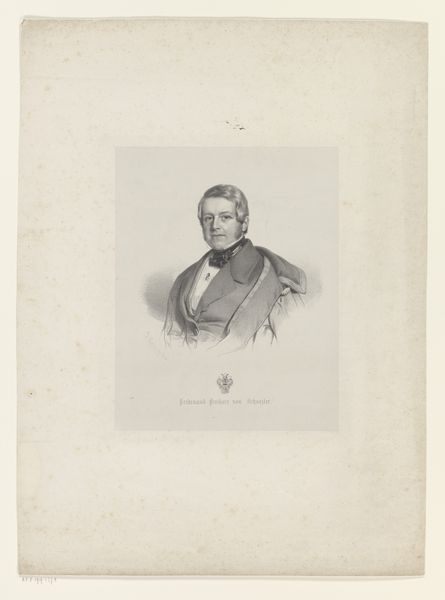
drawing, pencil
#
portrait
#
pencil drawn
#
drawing
#
neoclacissism
#
pencil sketch
#
pencil drawing
#
pencil
#
portrait drawing
Dimensions: height 221 mm, width 177 mm
Copyright: Rijks Museum: Open Domain
Curator: Here we have Christian Heinrich Gottlieb Steuerwald’s "Portret van Pierre Louis Du Pont," created in 1823. Editor: It's incredibly delicate, isn’t it? The pencil work is so fine, giving a real sense of fragility. And he’s got such a stern look. Curator: Steuerwald was working within the Neoclassical style, a movement that drew heavily on classical antiquity. Look at the formality of the portrait. The sitter's pose and the clean lines reflect the order and reason valued at the time. Editor: The medium, pencil on paper, emphasizes the role of the artist’s hand, the labor of creation. I am also noticing his clothing, likely of his military station. There’s such meticulous attention to the detail in the uniform which also reflects the values and expectations placed upon people in those roles at the time. Curator: Absolutely. Think about the context in which this portrait was made. It’s a period of revolution and social change; the portrayal of an individual is also an exercise of power and status. It suggests a statement about the subject’s place in society and how he wants to be perceived by posterity. Editor: Do you think the limited distribution of pencil drawings influenced the popularity of portraiture at this time? Its portability and reproducibility certainly had an influence on artistic production during that period. I'd imagine its accessibility impacted who got to have portraits made of them. Curator: It likely made portraiture accessible to a different segment of society than the painted portraits traditionally available to wealthy families. The power dynamic also shifted: a drawing felt more intimate than a formal painting, influencing its accessibility to the emerging middle class. Editor: It really makes you appreciate the role materials play in art production, and what such considerations have to tell us about class, labor, and access to image making in culture. Curator: Yes, considering all these aspects brings forth such interesting implications on how portraiture served specific purposes during this era. Editor: I agree, reflecting on the processes involved certainly shifted my perspective on this piece.
Comments
No comments
Be the first to comment and join the conversation on the ultimate creative platform.
